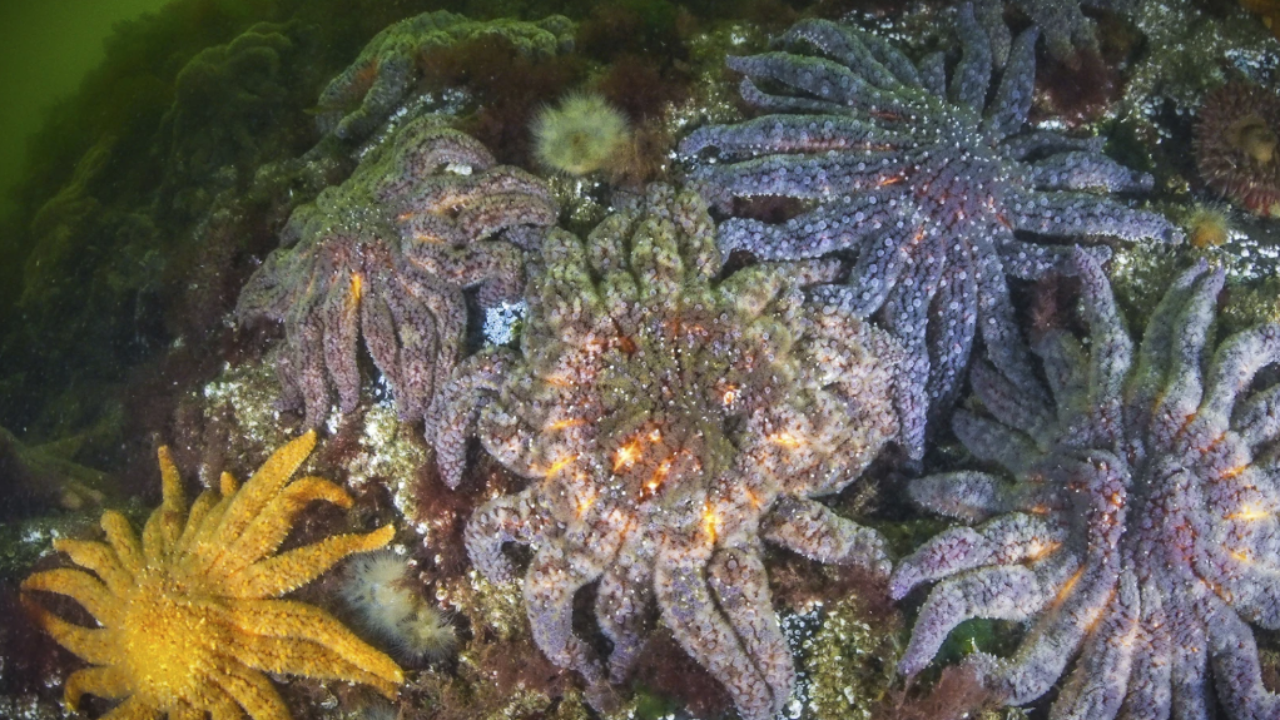
©(Grant Callegari/Hakai Institute via AP)
Pre-reading questions:
I will read each question. Then, please answer them.
講師がそれぞれの質問を読むので答えましょう。
- Have you ever seen a sea star before?
- Have you ever heard about animals getting sick in the ocean?
Vocabulary:
I will read the words, meanings, and sample sentences. Then, repeat after me.
単語、意味、例文を読みます。講師に続いて音読しましょう。
- disease /dih-ZEEZ/
- hole /hohl/
- discover /dih-SKUHV-er/
- healthy /HEL-thee/
- destroy /dih-STROI/
[noun] – an illness that affects people, animals, or plants
The disease spread quickly among the farm animals and caused many to die.
[noun] – an empty space or opening in something solid
The old roof had holes that let the rainwater in.
[verb] – to find something for the first time or to learn about something unknown
Scientists discovered a new island in the middle of the ocean.
[adjective] – being well and not sick; in good physical condition
The zoo keeps all animals healthy with good food and regular check-ups.
[verb] – to damage something so badly that it no longer exists or works
The storm destroyed several houses near the coast.
Article reading:
Please read the whole article. Then, I will check your pronunciation and intonation.
記事を音読しましょう。講師はあなたの発音とイントネーションを確認します。
Scientists have found the bacteria that caused a large die-off of sea stars along the Pacific coast of North America. This event began in 2013 and affected areas from Mexico to Alaska. More than 5 billion sea stars died, and over 20 species were harmed. The sunflower sea star lost around 90% of its population in the first five years. The disease, called sea star wasting disease, makes holes in the body, causes arms to fall off, and leads to death. A report in Nature Ecology and Evolution said the bacteria Vibrio pectenicida was also found in shellfish.Scientists discovered the cause by studying coelomic fluid, a liquid around the organs of living sea stars. Earlier studies looked only at dead animals, which did not have this fluid. Researchers now want to see if some sea stars are naturally resistant and if treatments like probiotics could help. They may also move healthy sea stars or grow them in captivity. Sea stars are important because they keep sea urchin numbers under control. Without them, sea urchins have destroyed most of the kelp forests in Northern California, which are important homes for sea life.
True or False:
Read the sentences and identify if they are true or false based on the article.
文章を読んで、記事に基づいて正誤を答えましょう。
- The sea star die-off began in 2013.
- The outbreak only affected sea stars in Alaska.
- Over 5 billion sea stars died during the epidemic.
- The disease caused the sea stars to grow more arms.
- The bacteria Vibrio pectenicida was only found in fish.
Fill in the blanks:
Choose the correct word from the table, then fill in the blanks.
適切な言葉を選んで空欄を埋めましょう。
| disease | holes | discovered | healthy | destroyed |
- Researchers ______ the reason why a group of forest plants stopped growing.
- A fire ______ the forest and left the land empty.
- A ______ tree produces more fruit than a sick one.
- There were ______ in the leaves caused by insects eating them.
- Scientists are working to stop a ______ that is killing many fruit trees.